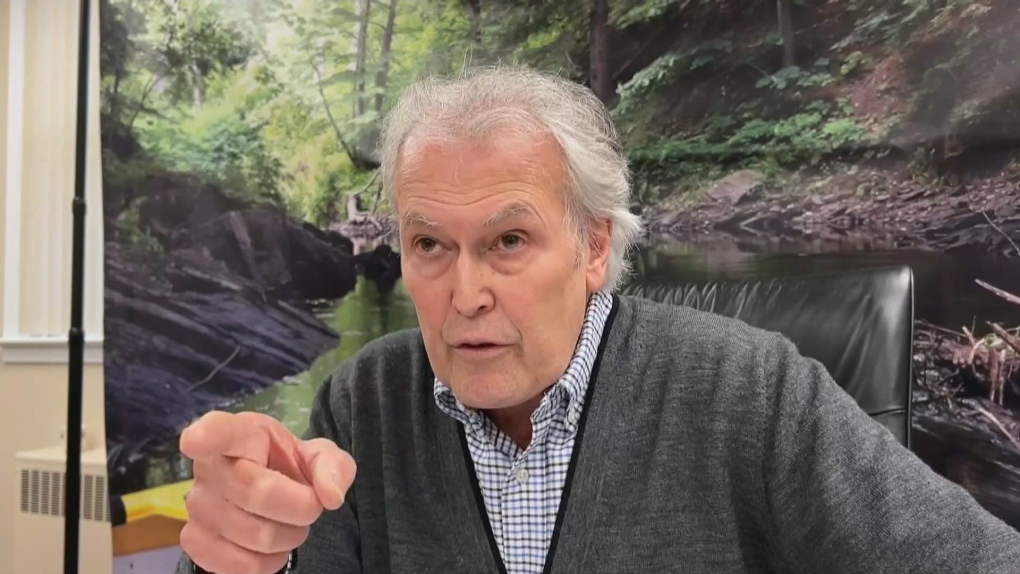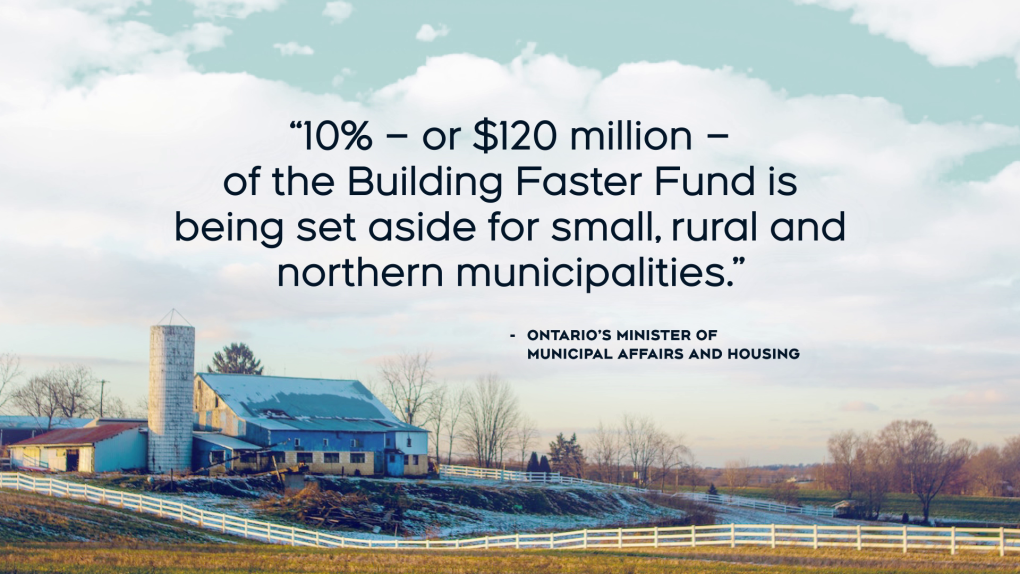The mayor of Tweed, Ont., along with several mayors and representatives from other surrounding municipalities, believe the provincial and federal government is neglecting them.
An animated Don DeGenova, Tweed’s mayor, spoke to CTV News on Monday, saying his community is one of several rural towns who feel the province hasn’t invested enough in matters such as infrastructure and housing.
 Don DeGenova, Tweed’s mayor, spoke to CTV News on Monday, April 15, 2024.
Don DeGenova, Tweed’s mayor, spoke to CTV News on Monday, April 15, 2024.
“As a municipality here in Tweed, we’re 6,100 people,” explained DeGenova, the small town mayor of the community about 200 kilometres west of Ottawa.
“We have all of these issues that large, urban centres have. But we don’t have the funds to address them.”
DeGenova feels the municipality has been shrugged off by the government of Ontario, particularly when it comes to housing.
Last summer, the government expanded its Build Faster Fund, a program built to reward municipalities with additional funding for meeting housing targets.
Tweed was not assigned a housing target. Of the 50 municipalities in Ontario that were assigned a target, only eight have a population under 50,000.
“We don’t have the funds nor the skill sets to do this, unlike large, urban centres,” DeGenova said.
“Yet we’re completely forgotten in the process. All of the municipalities in this area, none of us got any of that money from that fund, other than Belleville.”
An alternative option for small municipalities would be the federal government’s Housing Accelerator Fund, which has a separate application for townships with fewer than 10,000 people.
The federal government is offering the funding to accelerate the construction of 100,000 new homes across Canada over the next five years. Cities such as Ottawa are set to receive millions of dollars to help build much-needed housing.
Centre Hastings, a community with a population of just under 5,000 just west of Tweed, applied for the Housing Accelerator Fund, but was denied.
“We were really, really disappointed that we were denied that funding,” explained the chief administrative officer (CAO) of Centre Hastings, Typhany Choinard.
“The hundreds of thousands of dollars that are spent on the supporting studies for these applications, and then to feel like you’re not even part of that conversation is really, really disappointing.”
Back in Tweed, the town is also running into issues trying to revitalise its main street. There are a number of vacant properties that the mayor has worked tirelessly to resolve.
“We have vacant stores on our street that have been vacant for well over six months, in some cases, multiple years. We wanted to introduce a vacancy tax,” DeGenova explained.
When the mayor proposed the idea to the province, he was told the provincial government doesn’t like to raise taxes.
“I stood up and said every time you lower your taxes, I have to raise mine,” DeGenova continued. “They can look good, they can look great, but then we’re the ones that have to take the brunt of it because everything comes back on us.”
“Enough is enough because we can’t take on any more.”
The Ontario Ministry of Municipal Affairs and Housing said in a statement to CTV News that it has taken actions and provided billions of dollars in support to municipalities through several initiatives.
“We have introduced historic investments in municipalities to support housing-enabling infrastructure, including the $1 billion Municipal Housing Infrastructure Program, the $825 million Housing-Enabling Water Systems Fund and the $1.2 billion Building Faster Fund. Ten per cent – or $120 million – of the Building Faster Fund is being set aside for small, rural and northern municipalities,” a ministry spokesperson told CTV News in an email.
 Ten per cent – or $120 million – of the Building Faster Fund is being set aside for small, rural and northern municipalities,” a ministry spokesperson told CTV News in an email.
Ten per cent – or $120 million – of the Building Faster Fund is being set aside for small, rural and northern municipalities,” a ministry spokesperson told CTV News in an email.
“We will continue to work with our municipal partners to ensure that they have the tools and funding needed to support the growth we’re seeing.”
The issues Tweed is facing are not new concerns in the province, which has seen its rural population decline.
While Ontario’s rural population has remained relatively stable since the 1960’s, the proportion on Ontarians living in rural areas compared to the general population has decreased from 37 per cent in 1966 to 17 per cent in 2021.